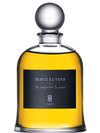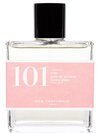Rose (Turkey)
Majestic and characteristic, spicy, green and honeyed, powerful and rich, both floral and fruity scent, that can evoke litchee.
Indispensable to the world of perfumery and all things fine fragrance, rosa damascena (otherwise known as Turkish rose or Damask rose) is the scent of choice for many perfumers and fragrance devotees alike. Its rich and deep—a tangible scent that announces itself in decadent layers that are fruity, floral and sweetly honeyed. Green facets mingle with spritely lychee.
Data sheet
- Type
- Extraction Method
- Used parts
- Natural raw material
- Steam distillation to obtain the essence and solvent extraction to get the absolute
- Fresh flowers, petals

































